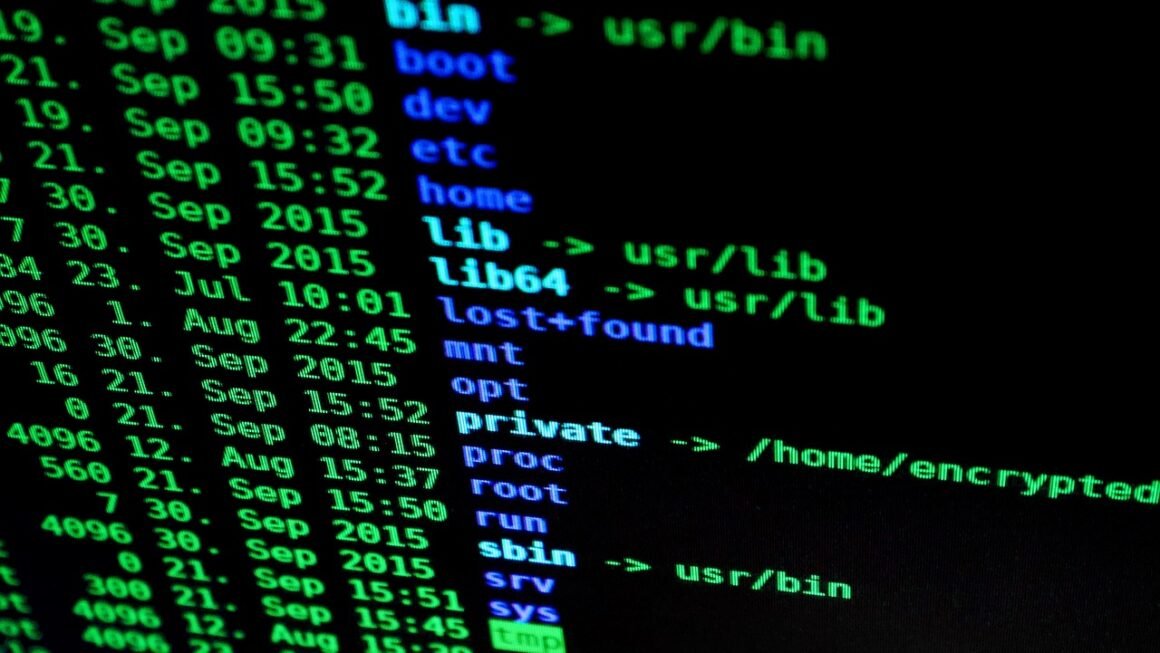Ransomware attacks are on the rise, impacting businesses and individuals alike with devastating consequences. Understanding what ransomware is, how it works, and what you can do to protect yourself is crucial in today’s digital landscape. This guide provides a comprehensive overview of ransomware, offering actionable insights and practical advice to mitigate the risk.
Understanding Ransomware
What is Ransomware?
Ransomware is a type of malicious software (malware) that encrypts a victim’s files or systems, rendering them inaccessible. The attacker then demands a ransom payment, typically in cryptocurrency, in exchange for the decryption key needed to restore access. Think of it as a digital hostage situation where your data is the hostage.
How Ransomware Works: The Attack Lifecycle
Ransomware attacks generally follow a predictable lifecycle:
- Infection: The ransomware gains access to a system or network. Common infection vectors include:
Phishing emails containing malicious attachments or links.
Exploiting software vulnerabilities (e.g., unpatched operating systems or applications).
Compromised Remote Desktop Protocol (RDP) connections.
Malvertising (malicious advertisements).
- Encryption: Once inside, the ransomware begins encrypting files using a strong encryption algorithm. The encryption process can be quite fast, especially on modern systems. The ransomware may also attempt to spread to other systems on the network.
- Ransom Demand: After encryption, the victim receives a ransom note with instructions on how to pay the ransom and decrypt the files. This note usually contains a deadline for payment and a threat to permanently delete the files if the ransom is not paid.
- Payment (Optional): The victim may choose to pay the ransom in the hope of recovering their data. However, there’s no guarantee that the attacker will provide the decryption key, even after payment. Furthermore, paying the ransom can encourage further attacks.
- Decryption (Potential): If the victim pays the ransom and the attacker provides a working decryption key, the files can be decrypted and restored. However, the decryption process can be time-consuming and may not always be successful.
Common Types of Ransomware
Ransomware comes in different forms, each with its own characteristics:
- Crypto Ransomware: This type encrypts files, making them inaccessible without the decryption key. Examples include WannaCry, Ryuk, and LockBit.
- Locker Ransomware: Locker ransomware locks the victim out of their device entirely, preventing them from using it. It displays a ransom note on the screen.
- Scareware: This type poses as legitimate antivirus software or technical support and attempts to trick the user into paying for fake services or malware removal.
- Double Extortion Ransomware: In addition to encrypting data, attackers steal sensitive information before encryption and threaten to leak it publicly if the ransom isn’t paid. This adds another layer of pressure on victims.
The Impact of Ransomware Attacks
Financial Losses
Ransomware attacks can lead to significant financial losses. These losses can include:
- Ransom Payment: The actual cost of the ransom itself.
- Downtime Costs: Lost productivity, revenue, and business opportunities due to system downtime.
- Recovery Costs: Expenses associated with incident response, data recovery, system rebuilding, and legal fees.
- Reputational Damage: Loss of customer trust and brand image. According to IBM’s 2023 Cost of a Data Breach Report, the average cost of a data breach globally was $4.45 million.
Operational Disruption
Ransomware can disrupt business operations, leading to:
- Inability to access critical systems and data.
- Delayed or cancelled services.
- Supply chain disruptions.
- Loss of customer data and confidential information.
- Damage to physical infrastructure (in some cases).
Reputational Damage
A ransomware attack can damage a company’s reputation, leading to:
- Loss of customer trust and loyalty.
- Negative media coverage.
- Decreased brand value.
- Difficulty attracting and retaining customers and employees.
- Potential legal action and regulatory fines.
Preventing Ransomware Attacks: A Proactive Approach
Employee Training and Awareness
Educate employees about the risks of ransomware and how to identify and avoid phishing emails, malicious links, and other common attack vectors. Regular security awareness training is essential. For example, conduct simulated phishing exercises to test and improve employee awareness. Key training topics include:
- Identifying phishing emails: Look for suspicious senders, grammatical errors, and urgent or threatening language.
- Safe browsing habits: Avoid clicking on suspicious links or downloading files from untrusted sources.
- Reporting suspicious activity: Encourage employees to report any suspected phishing attempts or security incidents to the IT department.
- Password security: Enforce strong password policies and promote the use of multi-factor authentication (MFA).
Robust Security Measures
Implement a multi-layered security approach to protect your systems and data:
- Firewall: Use a firewall to control network traffic and prevent unauthorized access.
- Antivirus/Antimalware: Deploy reputable antivirus and antimalware software and keep it up-to-date. Consider Endpoint Detection and Response (EDR) solutions for advanced threat detection and response capabilities.
- Intrusion Detection/Prevention Systems (IDS/IPS): Monitor network traffic for suspicious activity and automatically block or quarantine malicious traffic.
- Vulnerability Scanning: Regularly scan your systems for vulnerabilities and apply patches promptly. Use a vulnerability management tool to automate the process.
- Web Filtering: Block access to known malicious websites.
- Email Security: Implement email filtering and anti-phishing measures to block malicious emails. Consider using a Security Email Gateway (SEG).
Data Backup and Recovery
Regularly back up your critical data and systems to an offsite location or cloud storage. Test your backups regularly to ensure they can be restored quickly and effectively. The 3-2-1 backup rule is a good practice: 3 copies of your data, on 2 different media, with 1 copy offsite.
- Offsite Backups: Store backups in a separate physical location or in the cloud to protect against on-site disasters or ransomware attacks that target local backups.
- Immutable Backups: Use backup solutions that create immutable backups, which cannot be modified or deleted by ransomware.
- Backup Testing: Regularly test your backup and recovery procedures to ensure they are working properly and that you can restore your data quickly and efficiently.
Network Segmentation
Segment your network to isolate critical systems and data. This can prevent ransomware from spreading to other parts of your network if one segment is compromised. For example, isolate the financial network from the guest WiFi network.
Access Control and Least Privilege
Implement strict access control policies and grant users only the minimum level of access they need to perform their job duties. This principle is known as “least privilege.” Use Role-Based Access Control (RBAC) to manage user permissions.
Patch Management
Keep your operating systems, applications, and security software up-to-date with the latest security patches. Enable automatic updates whenever possible. Prioritize patching critical vulnerabilities that are actively being exploited.
Responding to a Ransomware Attack
Isolation and Containment
If you suspect a ransomware attack, immediately isolate the affected systems from the network to prevent the ransomware from spreading. Disconnect the compromised systems from the network and power them down. Disable WiFi and Bluetooth on the affected devices.
Incident Response Plan
Follow your incident response plan to assess the situation, identify the scope of the attack, and take appropriate action. An incident response plan should include:
- A clear chain of command.
- Procedures for identifying and containing the attack.
- Steps for data recovery and system restoration.
- Communication protocols for internal and external stakeholders.
Contacting Law Enforcement and Experts
Report the incident to law enforcement authorities, such as the FBI or local police. Engage with cybersecurity experts to assist with incident response, data recovery, and forensic analysis. Consider contacting a cybersecurity insurance provider if you have a policy.
Data Recovery
Attempt to restore your data from backups. If backups are unavailable or corrupted, consider engaging with a data recovery specialist. Avoid paying the ransom unless it is a last resort and you have carefully considered the risks.
Forensic Analysis
Conduct a forensic analysis to determine the root cause of the attack and identify any vulnerabilities that need to be addressed. This information can help prevent future attacks.
Conclusion
Ransomware remains a significant threat to businesses and individuals. By understanding the nature of ransomware, implementing proactive security measures, and developing a robust incident response plan, you can significantly reduce your risk of becoming a victim. Regular employee training, robust security measures, and comprehensive data backups are your strongest lines of defense. Remember that prevention is always better than cure in the world of cybersecurity.



